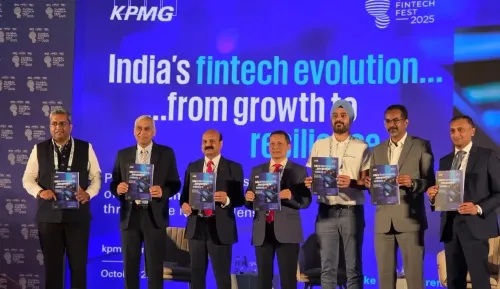Is Securing India’s Cyberspace a Shared Responsibility?

Synopsis
Key Takeaways
- Cybersecurity incidents in India doubled in the last two years.
- Over 1 lakh police officers are trained in cybercrime investigation.
- Financial Fraud Risk Indicator helps identify suspicious numbers.
- National Cyber Crime Reporting Portal facilitates citizen reporting.
- Collaborative efforts are crucial for enhancing cyber resilience.
New Delhi, Oct 8 (NationPress) As incidents related to cybersecurity have surged from 10.29 lakh in 2022 to 22.68 lakh in 2024, the Centre emphasized on Wednesday that protecting India’s cyberspace is a collective duty, necessitating collaboration between the government and its citizens to tackle cyber fraud.
Currently, over 1,05,796 police personnel are registered on the CyTrain portal, with more than 82,704 certificates issued, providing essential skills in cybercrime investigation to frontline officers, as per an official statement.
With a budget allocation of Rs 132.93 crore from the Centre, cyber forensic training labs have successfully trained over 24,600 individuals in areas like cybercrime investigation, digital forensics, and preventive strategies.
Furthermore, by March 2025, CERT-In had conducted 109 cybersecurity mock drills, involving 1,438 organizations across various states and sectors to evaluate cyber preparedness and enhance resilience, according to government reports.
India's digital surge has connected more than 86 percent of households to the internet, thereby increasing the potential for cyber fraud. Enhanced forensics, big data analytics, and homegrown tools have fortified national cyber resilience, as stated in the release.
As India celebrates the swift deployment of 5G technology, with 1.2 billion mobile subscribers and 970 million internet users, the emphasis on creating secure, inclusive, and scalable digital infrastructures solidifies the country’s role as a global leader in trusted and transformative digital systems.
The government pointed out the rising threats, including spoofing, phishing, and AI-driven deepfakes, whereby individuals are tricked into disclosing sensitive data through misleading emails or messages.
After instances of UPI being compromised via hacked mobile numbers, the Department of Telecommunications (DoT) initiated the Financial Fraud Risk Indicator (FRI), categorizing suspicious numbers into medium, high, or very high risk.
India’s regulatory framework encompasses the Information Technology Act and the Digital Personal Data Protection Act, along with operational entities like CERT-In, NCIIPC, Samanvaya, and the Sahyog portal to address the surge in cybersecurity threats, as per the release.
Additionally, the National Cyber Crime Reporting Portal was launched to facilitate citizens in reporting various cybercrime complaints, especially those targeting women and children. A dedicated cybercrime helpline, 1930, offers immediate support to victims of online financial fraud, the release highlighted.
- –IANS
aar/na









